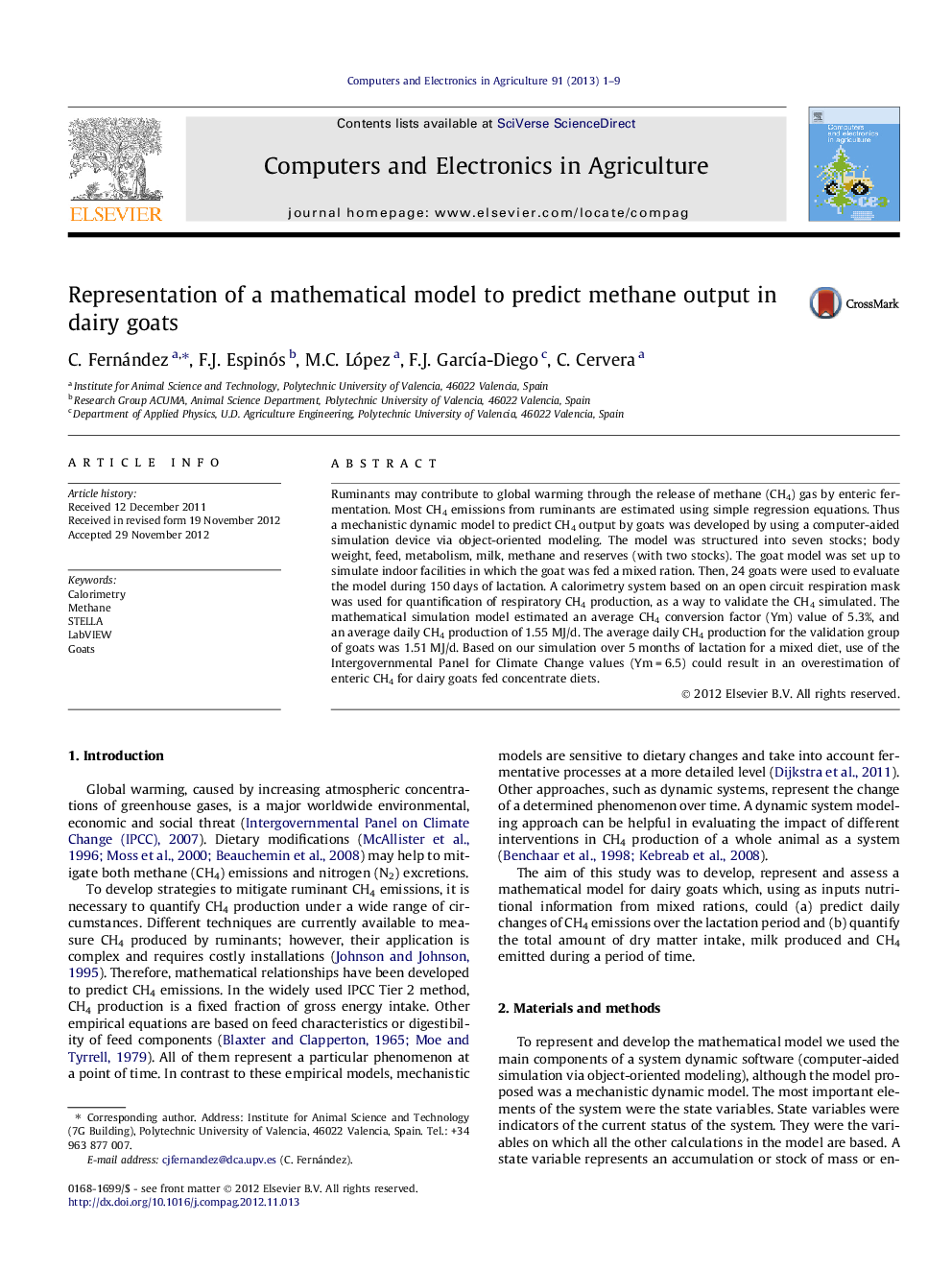| Article ID | Journal | Published Year | Pages | File Type |
|---|---|---|---|---|
| 84526 | Computers and Electronics in Agriculture | 2013 | 9 Pages |
Ruminants may contribute to global warming through the release of methane (CH4) gas by enteric fermentation. Most CH4 emissions from ruminants are estimated using simple regression equations. Thus a mechanistic dynamic model to predict CH4 output by goats was developed by using a computer-aided simulation device via object-oriented modeling. The model was structured into seven stocks; body weight, feed, metabolism, milk, methane and reserves (with two stocks). The goat model was set up to simulate indoor facilities in which the goat was fed a mixed ration. Then, 24 goats were used to evaluate the model during 150 days of lactation. A calorimetry system based on an open circuit respiration mask was used for quantification of respiratory CH4 production, as a way to validate the CH4 simulated. The mathematical simulation model estimated an average CH4 conversion factor (Ym) value of 5.3%, and an average daily CH4 production of 1.55 MJ/d. The average daily CH4 production for the validation group of goats was 1.51 MJ/d. Based on our simulation over 5 months of lactation for a mixed diet, use of the Intergovernmental Panel for Climate Change values (Ym = 6.5) could result in an overestimation of enteric CH4 for dairy goats fed concentrate diets.
► We represent a mathematical lactation goat model from system dynamics perspective: stocks and flows. ► We model lactation curve and methane conversion factor (Ym) in goats from dietary energy balance. ► We examinant changes in methane emission during lactation. ► We validate the methane emission with an open circuit respiration calorimetry.
